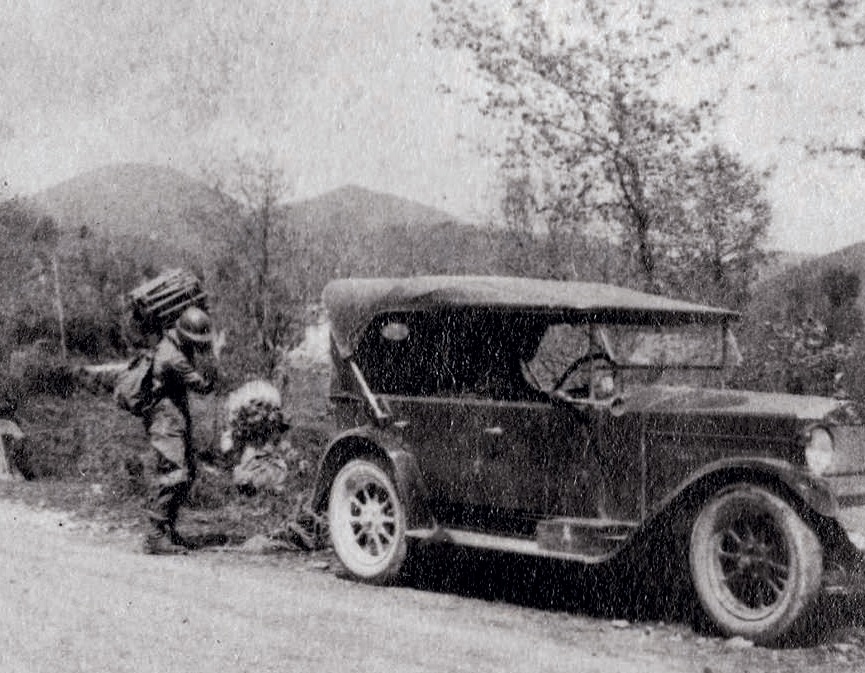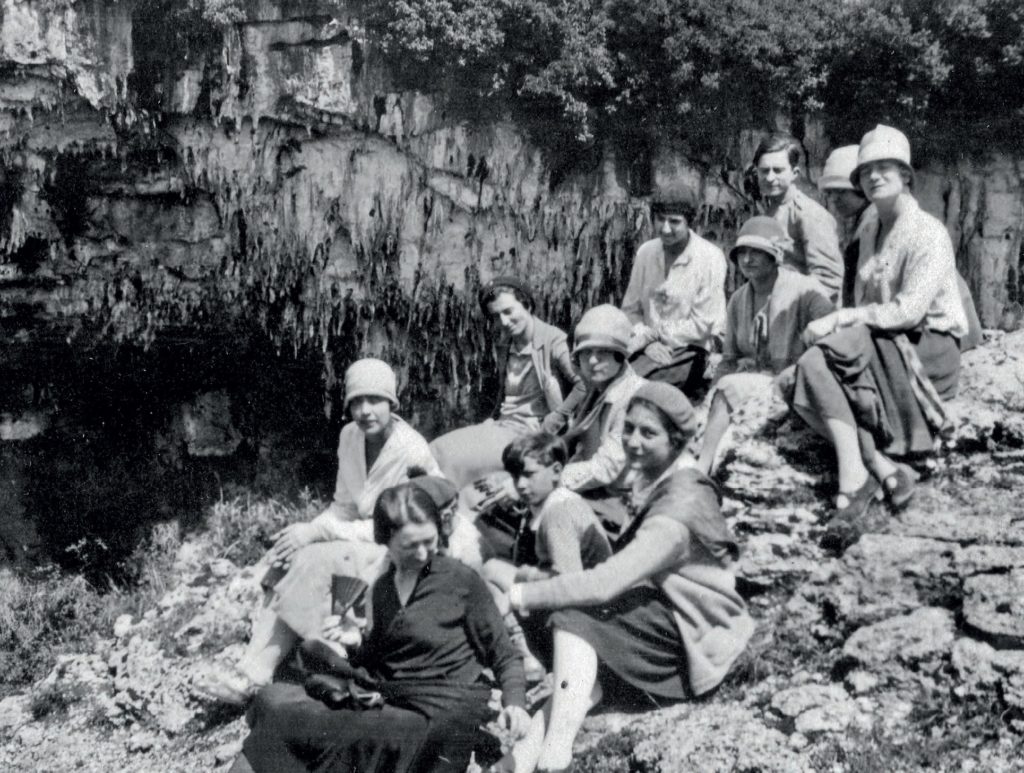D’Antullo pothole was well known locally, giving rise to stories and legends of all kinds. The first known descent was that of the Italian naturalist Paolo Spadoni in 1800; he descended to the bottom of the pothole together with two farmers:
“Using the help of a long and thick rope brought with me, I had the pleasure of entering it, and descending to the bottom to examine its interior. Two daring Collepardesi were the ones who, with my promise of money, induced themselves to serve me as a guide, and I will also say to make me heart” [translated from the original]
Spadoni visits and describes also the nearest Grotta di Collepardo (= Grotta dei Bambocci, Grotta Regina Margherita), calling them [translated from the original] “two marvelous objects that no one has examined before” and expresses the idea of a possible underground connection between D’Antullo pothole and Grotta dei Bambocci, an idea that will become for others a dream of possible explorations:
“I have reason to believe that La Grotta dei Bambocci was previously connected by underground channels, now closed, with the Pozzo d’Antullo” [translated from the original].
The caves were visited also by the Italian geologist Giovan Battista Brocchi (1817), Giuseppe Marocchi (1826), and by the French abbot and scholar Domenico Santucci (1845), accompanied by the architect Rossini and three artists, that drew eight engravings. Other scientist or literated visited D’Antullo pothole: Giuseppe Ponzi, Fabio Gori, and the renowned German medievalist Ferdinand Gregorovius that in the third volume of his Wanderjahre in Italien (1858) writes:
“it showed at its bottom a dark green forest of treetops and creepers that gently sway […] the sun dropped streaks of light into those depths so it was possible to see lively fluttering butterflies over that sunken forest […] and the unreachable flowers down below below, the labyrinth of wild paths in that gloomy thicket, the flourish of the birds that live there, excited the imagination: we could imagine in this magical underground wood a fairy paradise” [translated from the original].
In 1928 the French speleologist Eduard Alfred Martel recalls, in one of his scientific articles of having descended on April 20, 1903 an “enormous, very curious abyss: the Pozzo d’Antullo or d’Antrollo”. Martel takes photographs, temperature and altitude measurements with a “holosteric barometer” and mentions in the article that the quotas were “specified by the kind care of his friend Eugenio Boegan”.
Martel, the Father of Speleology, puts forward a speleogenetic hypothesis of the connection between d’Antullo pothole and Grotta dei Bambocci:
“When you go down there is no gallery […] in the innermost part, you can see a crack that should be widened or blown up: it is very likely that it leads, as in Padirac or Tindoul, in France, to new galleries with direction towards Grotta Margherita. Personally, I have no doubt about the connection between these two cavities” [translated from the original: E. A. Martel, La grotta Regina Margherita a Collepardo, in Le Grotte d’Italia, a. 2, n. 2, apr.-giu. 1928, p. 66-67].
Alfred Martel knew Carlo Franchetti, then President of the CSR, with whom he was in correspondence. The CSR’s cavers descended D’Antullo pothole on May 21, 1928 and Franchetti sent a letter to Martel on the outcome of the visit, also updating it on recent explorations at the Ouso dell’Isola (Carpineto Romano, RM):
«Dear Mr. Martel, the memory of your kindness in Paris is always present and alive […] My companions […] went to the bottom of the Santullo well […] and they found that the water flows at the foot of the wall and then infiltrates an impracticable landslide caused by the collapse of the vault. The perpendicular stalactites suggest the period preceding the collapse, while all the others have strange circular and almost horizontal formations … which were caused by the deposit of limestone under the action of a current of air. Filming was done. In Carpineto an 80-meter abyss was explored – we have checked 8 so far – with a widening at the base and some streams of water that engulf in a landslide. This water almost certainly goes towards the plain of the Pontine Marshes. The explorations of the beautiful Pastena cave continue regularly. In August, or rather from 11 to 20 July, there will be a caving congress in Rijeka in which we will participate. I received the kindest welcome at the Sorbonne” [translated from the original, CSR Archives].





